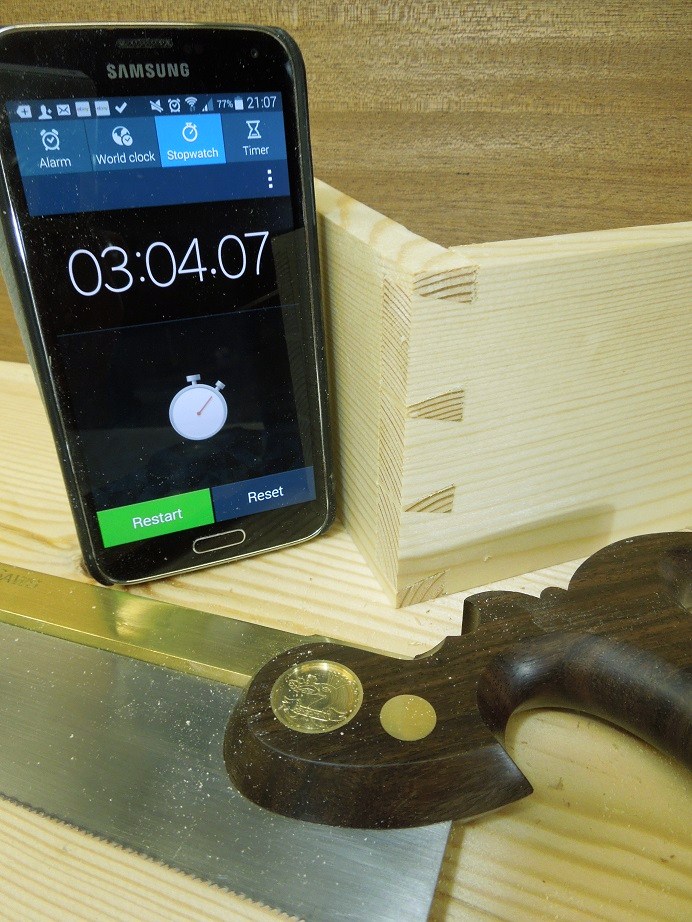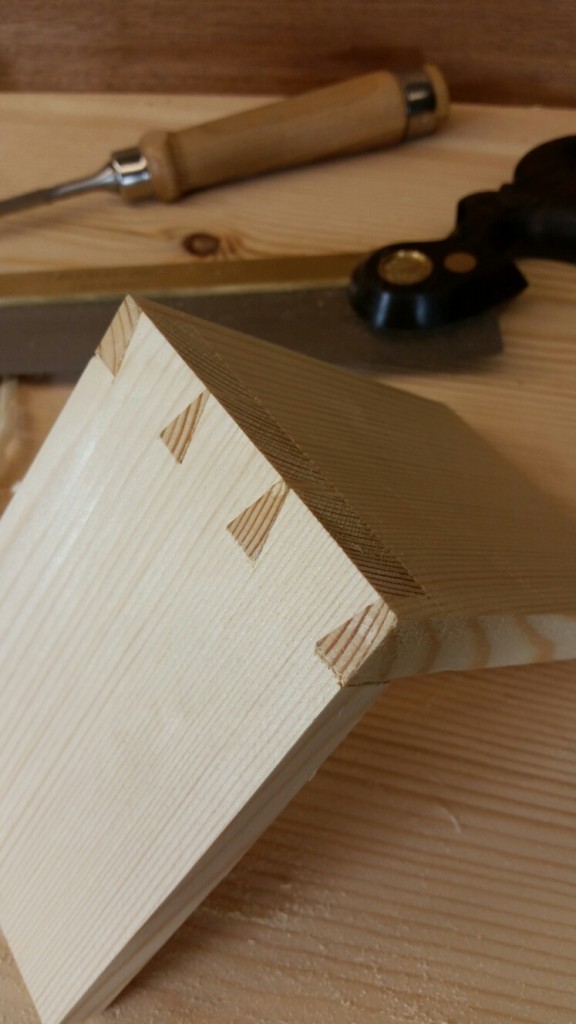We may receive a commission when you use our affiliate links. However, this does not impact our recommendations.
“Could I do it,” I thought? A half-reasonable set of through-dovetails in three minutes? Needless to say, I could not do it the first time of asking (and if you are interested you can watch my best attempt below). But the lessons to be drawn, reflections and the benefits of such a challenge are beyond a quick set of dovetails in pine. Here are some of my thoughts.
An analogy would be soccer training with a tennis ball. Practicing soccer with a tennis ball can help build skills as you focus much harder on a more difficult task (a smaller ball) to get good results. Then when given a full-size soccer ball, it feels much easier. The same is true with the time limit in the dovetail example: an OK set in three minutes and a fine set in six minutes – which feels like an eternity after seeing those seconds slip away!
Being ruthless! After watching a few of my attempts I became aware of anything that was preventing me from completing the task at hand. It got a bit obsessive. I noticed how I would waste time with too much vise-screw rotation to clamp and remove the work, so I adjusted my habitual spin of the screw. I had to apply the same mindset with setting out as well. I simply could not set out accurate proportions and angles; it had to be done by sight and experience. However, adding a gauge baseline was still fast and was not something I could drop.
Pins first (I’m normally tails first). If speed is an issue I found pins first faster for one reason: speed of marking out. With pins first on stuff of this size, you can easily and positively hold pins onto the tail board and draw around them with a pencil. With tails first, it’s nearly impossible to get a pencil in there on 16mm thick stuff (a knife or saw is needed) and it’s more of a balancing act with more process steps to get the tails balancing on the pin board and marked successfully.
Cope tight to the baseline (and avoid the coping saw when possible). With more time on hand I’ll often leave a little too much to pare away with a chisel; that had to change to hit three minutes. Any cleanup after coping needed to be done with paring with hand pressure rather than mallet blows. The time taken to pick up and put down a mallet and to tap a chisel all seemed to take too long and was contributing to my sailing past the time limit. With the waste between the tails I had no choice but to remove with chisel strikes, one above the baseline and then one on is ideal if possible when speed is required.
Sharp makes it easier. It really highlights again what sometimes seems an overstated fact to woodworkers, but sharp for the task at hand makes life sweeter. For this task, honing was at 25° rather than the standard 30°ish – 5 ° does make a difference!
Wax on, Wax off > Repetition. It’s nearly impossible to improve without a standardized approach and repetition. Couple that with some self criticism plus a dash of reflection and you’ll have a recipe for improvement. Most projects can be broken down into techniques and joinery. If daunted or unsure about a project identify the problem areas, grab some scrap or cheap lumber and practice until you are happy with the results.
Quality suffers when time is the primary motivator; you only need look at the photographs to see that……
The old lessons on being organised are as valid as ever and the “Useful Hints” in Carpentry & Joinery by R. Bayliss below sums that up very well.
- The bench must be kept clean and tidy if good work is to be produced.
- Only those tools in constant use need be on the bench.
- Tools should always be put back in their proper places after being used.
- The bench way must be kept clean.
- All waste, tenon cheeks and short ends should be put at once into the cuttings bin. This will keep the floor clean and thus prevent accidents.
- Convenient storage space must be provided for all bench equipment.
So beyond the fun of the challenge these are simple lessons that could improve one’s woodworking both in terms of quality and speed.
— Graham Haydon
Here are some supplies and tools we find essential in our everyday work around the shop. We may receive a commission from sales referred by our links; however, we have carefully selected these products for their usefulness and quality.











I’m definitely a pins first fan. To me, tails first dovetails are more difficult to mark. By going pins first they can be marked easily with a sharp pencil. I never saw the need for a coping saw either, which I feel adds an unnecessary step, as chisels will be needed regardless to clean up the base. Obviously speed isn’t everything to a hobbyist, but forward progression during a project is certainly important.
Thanks Graham – I think you did a good job and as you point out, the goal is not to make 3 minute dovetails, but to use it as a “skill-builder” to see what you can “strip away” from the job that is waisting time or effort.
I saw Paul Sellers do this – I think his is 4 minutes+ but with a similar goal – teaching skill building!